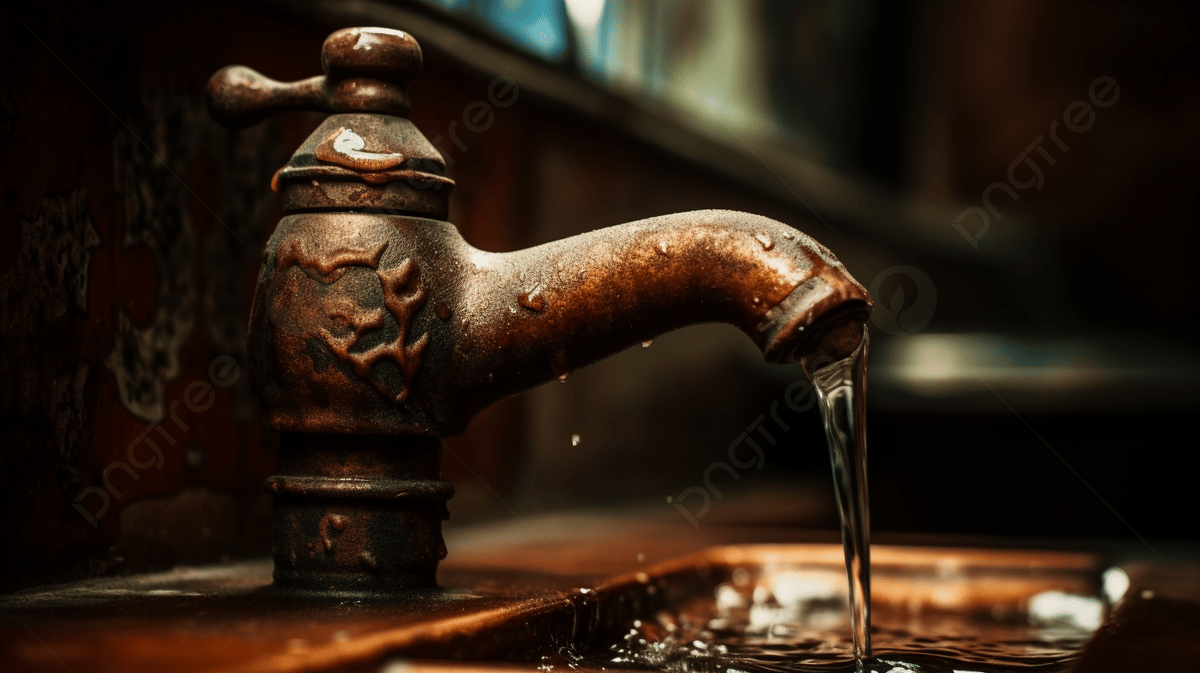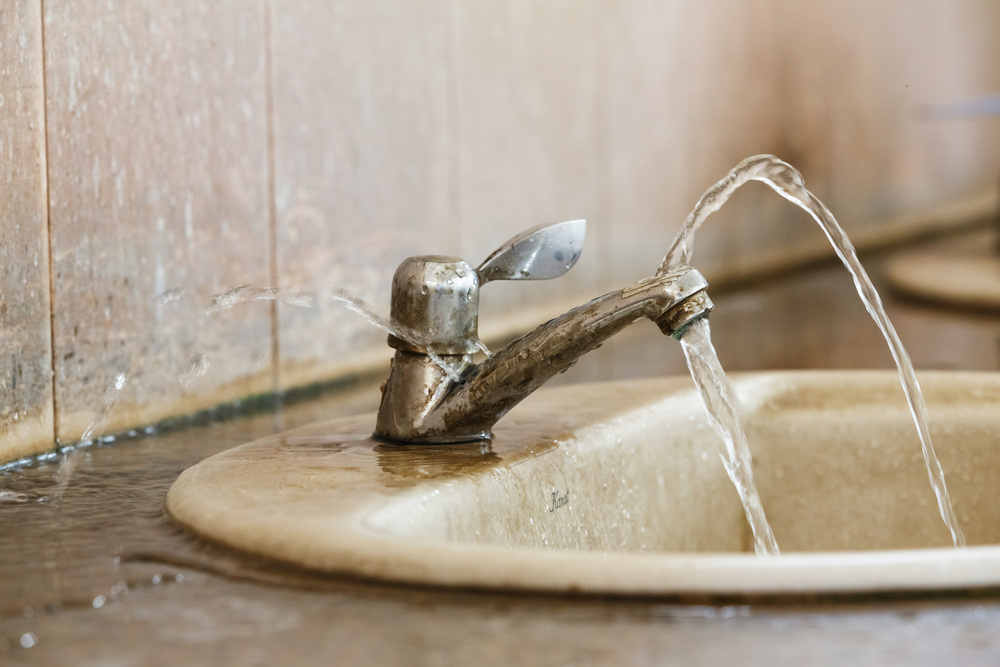Why a Faulty Faucet Matters
Why a Faulty Faucet Matters
Blog Article
Nearly everybody seems to have their personal piece of advice on the subject of Health Risks Posed by Leaking Faucets.

Introduction
A leaking tap could seem like a small annoyance, yet its consequences extend much past the periodic drip. Recognizing the results of a leaking tap is important for both house owners and the atmosphere. In this post, we'll explore the numerous influences of this usual house problem and why resolving it quickly is vital.
Reasons For Leaky Faucets
Leaky taps can arise from a range of elements, including wear and tear, high water stress, and rust. In time, the consistent use faucets can lead to damaged seals and gaskets, triggering leaks to develop. In addition, extreme water pressure can place stress on plumbing fixtures, bring about leakages. Rust and rust can additionally compromise tap components, making them vulnerable to leak.
Water Wastage
Among the most significant repercussions of a leaky tap is water waste. Also a little drip can add up to gallons of drainage in time. This not just drives up water costs but additionally contributes to water deficiency and environmental destruction. Dealing with dripping faucets promptly is vital for saving this priceless resource and decreasing its effect on the earth.
Financial Impact
Along with wasting water, leaky taps can also have a considerable economic effect. Raised water bills are a straight consequence of water waste, setting you back homeowners numerous bucks yearly. Additionally, the cost of repairing water damages triggered by leakages can be substantial, particularly if left neglected for an extensive period.
Environmental Influence
The ecological impact of leaking taps expands beyond water wastage. By saving water, home owners can contribute to wider efforts to reduce water shortage and shield natural communities. Lasting options such as rain harvesting and water-efficient components can further decrease the environmental footprint of family water use.
Technical Solutions
Innovations in technology have resulted in the growth of smart faucets and water-saving devices that help reduce water wastage. Smart faucets utilize sensors to discover movement and adjust water circulation as necessary, reducing waste without compromising convenience. Water-saving tools such as aerators and low-flow showerheads are likewise reliable in saving water without compromising performance.
International Perspectives
While leaky taps may seem like a localized issue, they add to broader international obstacles such as water shortage and environment adjustment. In areas already dealing with water stress and anxiety, every drop counts, making leakage prevention and repair work essential. By embracing water-saving techniques and purchasing sustainable technologies, home owners can play their part in addressing these pushing worldwide issues.
Governing Actions
Government guidelines play an essential role in reducing the impact of dripping faucets and advertising water preservation. From building codes that call for water-efficient components to water-saving incentives and discounts, policymakers have a variety of tools at their disposal. By applying and implementing these policies, federal governments can make sure that property owners focus on water conservation in their lives.
Community Impact
Resolving leaking taps needs cumulative efforts at the area level. By elevating awareness concerning the significance of water preservation and providing sources for leakage detection and fixing, regional authorities can encourage property owners to act. Campaigns such as water-saving rebate programs and leak discovery campaigns can incentivize habits adjustment and promote accountable water use.
Case Studies
Real-life instances of the influence of leaky taps emphasize the importance of positive upkeep and prompt fixings. From water damage to escalating water costs, the effects of disregarding leakages can be extreme. By sharing these study, homeowners can better comprehend the value of addressing leaky faucets immediately.
Educational Campaigns
Educational projects play a crucial role in increasing awareness about the impacts of leaking faucets and promoting water preservation methods. Via workshops, workshops, and on-line sources, home owners can learn how to spot and repair leaks themselves. By equipping individuals with understanding and tools, educational campaigns can foster a culture of responsible water use within areas.
Wellness Problems
Dripping taps can develop favorable atmospheres for mold and mildew and mildew growth, posing health risks to owners. The visibility of mold and mildew can intensify respiratory issues and allergic reactions, specifically in prone individuals. Additionally, water damage arising from leakages can compromise the structural honesty of structures and result in costly repairs.
Do it yourself vs. Expert Repair work
When faced with a leaking faucet, home owners commonly discuss whether to attempt fixings themselves or employ a professional plumber. While do it yourself repair services can save cash, they may not always resolve the underlying issue successfully. Expert plumbings have the proficiency and tools to diagnose and take care of leaks appropriately, guaranteeing lasting options and peace of mind for home owners.
Preventive Measures
Protecting against leaking taps needs normal maintenance and aggressive steps. Straightforward tasks such as changing damaged washers and seals can avoid leakages from developing. In addition, upgrading to top notch fixtures and minimizing water stress can help extend the life-span of faucets and lessen the risk of leaks.
Final thought
In conclusion, the impacts of a dripping tap extend far past the occasional drip. From water wastefulness and boosted water bills to health and wellness problems and environmental influence, the consequences of disregarding leaks can be substantial. By attending to leaking faucets without delay and taking on water-saving practices, property owners can mitigate these impacts and contribute to a more sustainable future.
Causes and Consequences of a Leaky Faucet
Although it’s a relatively common issue, many people don’t know what causes a leaky faucet. Additionally, few homeowners are familiar with the consequences of leaky taps, causing them to ignore the problem. However, much of the damage caused by leaky faucets can be prevented by reacting swiftly.
In this article, we’ll provide a better understanding of leaky faucets by listing their causes and consequences.
What causes a leaky faucet?
Many internal pieces of the faucet responsible for turning the water on and off can break. Consequently, they can’t function correctly and will give rise to leaks. Here are a few common causes of leaks:
Loose washers
The washer opens and closes when turning the faucet on and off. This movement produces friction, causing wear and tear. Over time, the washer gets worn out and won’t fit closely to the valve seat, leading to a leak.
Worn out O-rings
O-rings seal gaps between the internal parts of the faucet. If they fail, water can seep through these gaps and result in a leaky faucet.
Poor seals
Many faucets have inlet seals that let water freely flow when turning the faucet on and stop when it is turned off. If there’s too much sediment or water pressure, the seals can suffer damage and cause the faucet to leak.
Corroded valve seat
The valve seat sits at the bottom of the faucet’s mechanism. It plays a part in turning the tap on and off, and it can corrode due to repeated usage. If so, water will be dripping around the handle area.
Worn out faucet cartridge
Single-handle faucets have a faucet cartridge that helps control the water flow. Due to normal wear and tear, the cartridge can start leaking.
What are the consequences of a leaky faucet?
High water bills – Dripping faucets can lead to much higher water bills due to the amount of water wasted. In particular, as much as 17 gallons of water can be wasted during a single day if a faucet has about one drip per second. Mold and rot – Mold can develop in any moist area, making the area around leaky faucets an ideal breeding ground. Also, any wooden elements affected by the leak can eventually rot. Overflows and drain clogs – If the leak persists for a while, it can cause a lot of stress on the plumbing system and lead to overflows and drain clogs. Water stains – Minerals accumulating in the sink due to a leaky faucet can be quite tricky to remove. In the worst-case scenario, you might need to buy a new sink. https://www.jimmyjoesplumbing.com/blog/causes-and-consequences-of-a-leaky-faucet

We had been made aware of that write-up about Causes and Consequences of a Leaky Faucet through an associate on another blog. Do you know somebody who is looking into the niche? Do not hesitate to share it. Thanks for being here. Revisit us soon.
Report this page